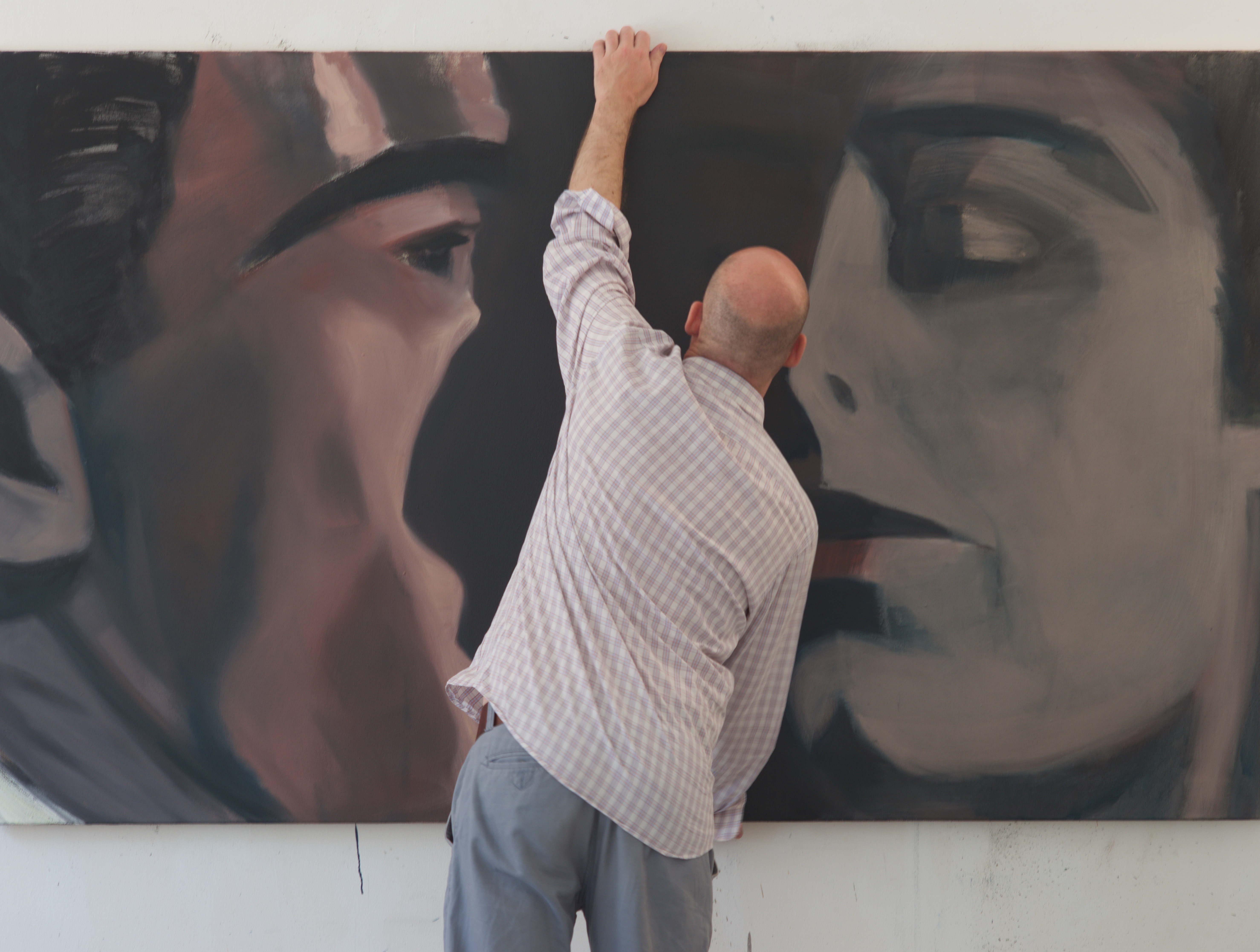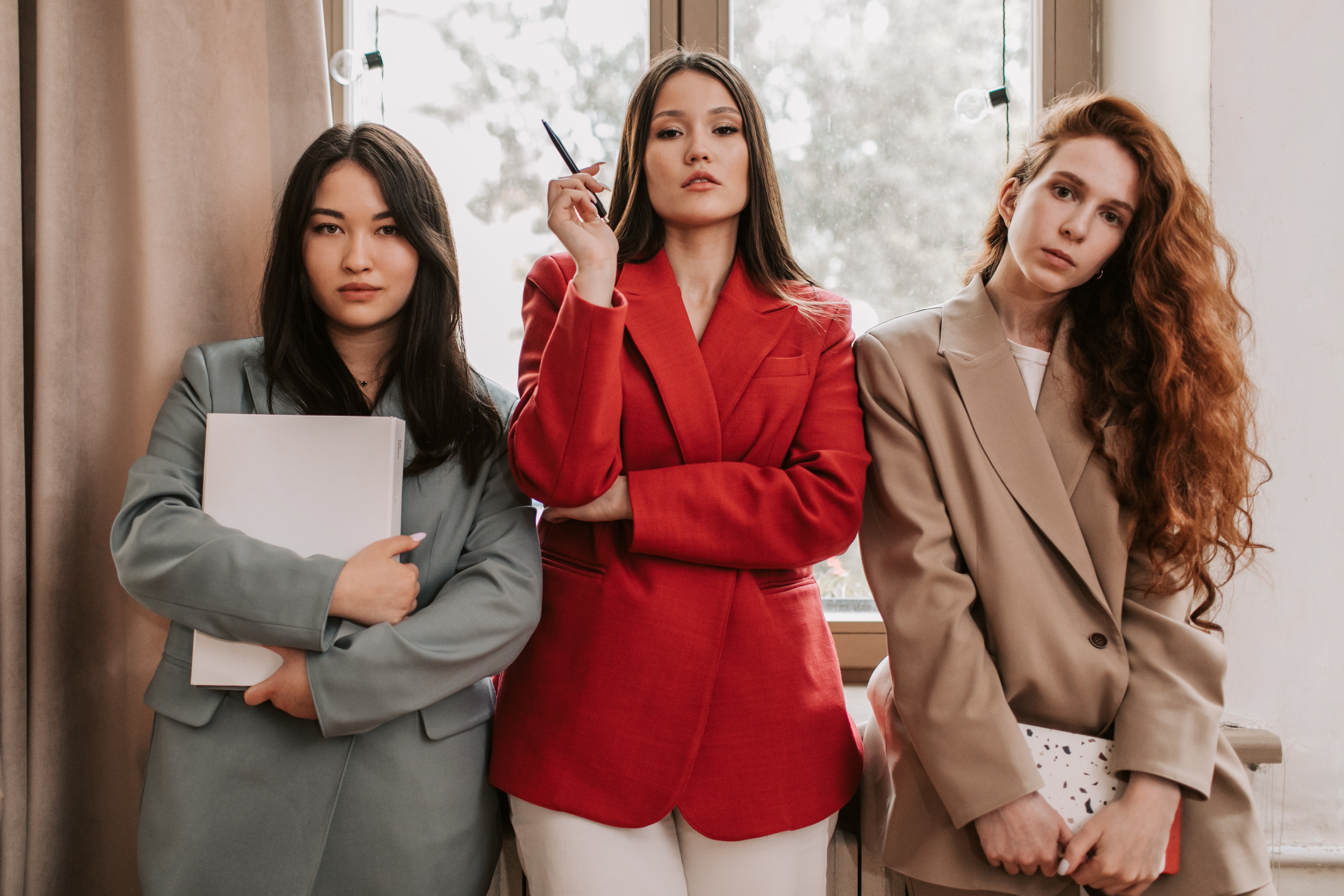Max Diel Interview – an Ode to Melancholy
Hardly anyone masters the translation of photography into painting as gallantly as Max Diel.
His works are often based on a touch of melancholy. What melancholy means to him and why he can’t and won’t be assigned to any specific style, you can find out in our interview.
You often translate photographs into painting. What characteristics does a photograph have to have for you to paint it?
In general, I can’t say that a photograph must have a certain characteristic for me. It’s rather that I encounter certain situations in real life, which I then capture with the camera. Seen this way, the camera is like a sketchbook. The motifs I find are often somehow mysterious. But sometimes also very banal.
Digitalization has decisively changed the creative process. When I was younger and had to take analog photos, I sometimes fetched a whole film reel from the photo lab without any useful shots! Today I can analyze the usability of the motif much faster and more directly.
As far as the situations described above are concerned, I would speak classically of "inspiration". Literally translated this means „aspiration“ „in-spiration“. In the broader sense also: "breath, soul, spirit". This actually describes quite well when a picture or a work was successful for me. I work on a picture until it has these ingredients of spirit and/or soul.
These "ingredients" are there from the very beginning of inspiration. However – and this is very important – it is not about simply copying a photo.
In the exhibition context, one encounters many pictures that are simply copied and repainted photographs, but where no creative-transformational process has taken place.
I don’t want to rule out the possibility that art can take place here, too, if you think of photorealism, for example. There are definitely good representatives. But this is not my way.
Picasso once said: "If you know exactly what you want to do, why should you do it at all? Since you already know it, it’s completely without interest. Then it is better to do something else". I agree tothat.
Your works often seem introverted and a little melancholic. Why?
There is no real reason for the melancholic effect of my pictures. In general I can say that the basic mood of melancholy appeals to me very much. If, for example, I go through the CD collection that I listen to during my work in the studio, then I find CDs by a-ha, Anne Clark, Jacques Brel, Chopin, Nina Simone, etc., and I find that the melancholy is very melancholic.
I like very different styles, in the fine arts as well as in music. The melancholic fascinates me – especially in music.
I can best describe it as a kind of "coming home". It is a feeling that has always been there. When I see photos from my childhood, I see little joyful smiling, as is often seen in children’s photos. As a child I always hung somewhere with a book in a corner and was spiritually in another world. Maybe you can take "the other world" as a hanger. It has always interested me more than the world we live in.
There is also a certain connection between melancholy and surrealism. Melancholy has also been described as the "lust of dreaming" (exhibition catalogue "Melancholy. Genius and Insanity in Art", Paris, Berlin 2006).
Rilke writes in the Duineser Elegien: "Beauty is only the terrible beginning that we are just about to endure, and we admire it so much because it serenely spurns to destroy us". Isn’t that also about melancholy? Directly after that he writes: "Every angel is terrible". A strange sentence. I always have to think of Romy Schneider or Marylin Monroe with this sentence. With Romy the melancholy is quite obvious (and therefore I’m a fan), with Marylin it’s much more hidden, because she portrayed the squeaky happy sex-blonde. Meanwhile the whole world knows that it looked different in her and I think, if you look closely, you will notice it. Especially this contrast intensifies the melancholy.
The introvert has a lot to do with the fact that I also call my pictures a kind of "journey to the inside". The photo on the outside is only the starting point to listen into myself and to perceive one’s own moods. Like Marlene Dumas or Maria Lassnig. But Edward Munch can also be mentioned here.
Your art cannot be assigned to any real style. How would you describe your style?
Style can never be a goal or an intention in itself! It is always the result of an artistic intention. Everything else gets caught. As far as I know, very few artists have felt comfortable with the styles attributed to them. In some cases, such as the Impressionists, the term was even meant to be devaluing.
But of course I can also make useful statements here. In general, I am fascinated by art that takes place in the intermediate realm of figuration and abstraction. It starts in the early Renaissance – especially the Northern European Renaissance.All these partial-perspective views that repeatedly break the gaze and open up several dimensions simultaneously. Whether this has to do with perspective ability or inability is completely irrelevant to me.
You can feel the enthusiasm for painting in this epoch, which wants everything at the same time. Sometimes it is about faith, spirituality, the psyche and the grotesque, then perhaps simply about the representation of human skin and then again about colour, light and space. There is so much research spirit in it. You can look directly into the artist’s brush, hand and brain. Of course, later centuries also produced great painters, but they are very much based on a well thought-out and experienced technique. That makes them calculable for me and therefore a bit boring.
What feedback do you get from viewers on your paintings?
I have real "fans" who can immediately get into the logic of my pictures and don’t need much explanation, and then there are people to whom you have to constantly explain what to see and understand how and why. Then I feel quite helpless. After all, it’s all about someone finding themselves in my pictures. I can only initiate this process. The viewer has to walk the rest of the way himself. Theoretical concepts don’t help much. You have to rely completely on your own life, feelings and experiences.
If that works, the viewer and I meet in infinity. That sounds very esoteric now, but is actually meant to be so.
In my innermost I look for a point at which I "burn", so to speak, or where something happens that transfers itself to the viewer and evokes associations and experiences that lead him/her into their own inner being.
As I said: Often this works, often unfortunately not. To say it with the Indian painter Bhupen Khakhar: "You can´t please all".




